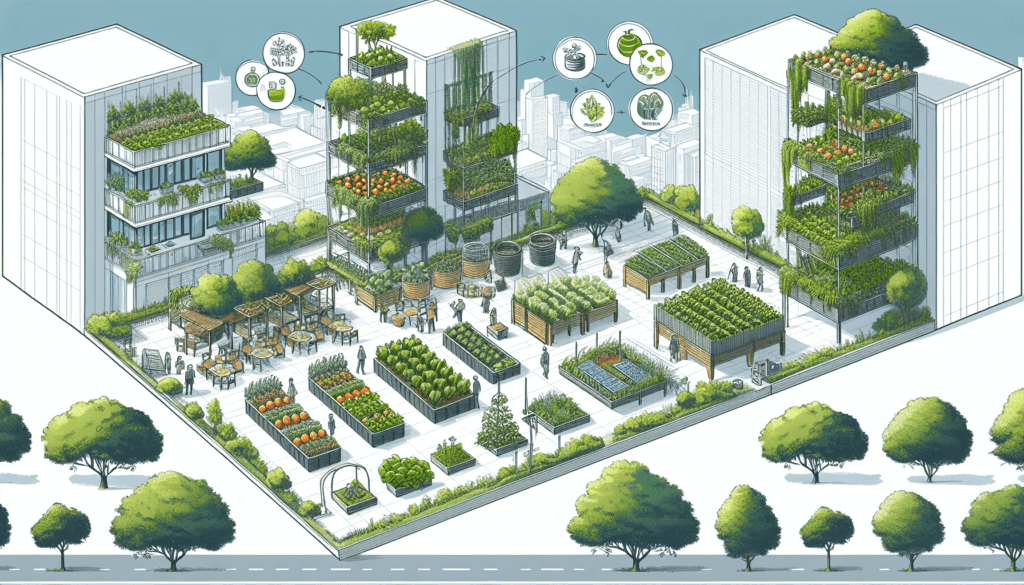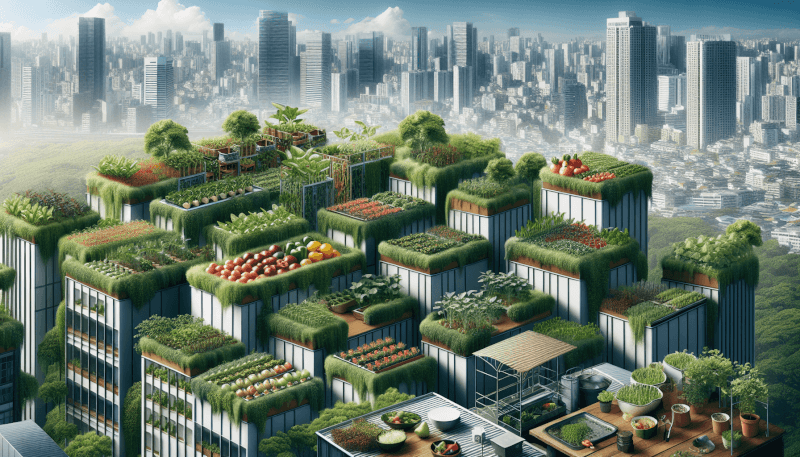Imagine transforming the concrete jungle of urban areas into a bountiful oasis of mouthwatering goodness. With the concept of edible landscaping, you can turn public spaces and private gardens into beautiful havens filled with delicious fruits, vegetables, and herbs. This revolutionary approach combines the aesthetic appeal of traditional landscaping with the practicality and sustainability of growing your own food. In this article, discover the key steps to seamlessly incorporate edible landscaping in urban areas, and unlock the potential of creating a greener and more vibrant urban environment for everyone to enjoy.
Benefits of Edible Landscaping
Environmental benefits
Edible landscaping offers numerous environmental benefits. By incorporating edible plants in your landscape, you can create a more sustainable and eco-friendly environment. These plants contribute significantly to reducing carbon emissions, improving air quality, and promoting biodiversity. They also help in conserving water and reducing stormwater runoff. Since edible plants require fewer chemical inputs such as fertilizers and pesticides, they help minimize pollution and the negative impacts on the environment.
Health benefits
In addition to the environmental advantages, edible landscaping also provides several health benefits. Growing your own food allows you to have access to fresh, nutritious produce right in your backyard. This promotes a healthier diet and lifestyle, as you can consume pesticide-free fruits, vegetables, and herbs. Eating locally grown food has been linked to a lower risk of chronic diseases and improved overall well-being. Additionally, being engaged in gardening activities is a great form of exercise, reducing stress and promoting mental well-being.
Community benefits
Edible landscaping has wide-ranging benefits for the community as well. By incorporating edible plants in public spaces, parks, and community gardens, you create an opportunity for social interaction and community engagement. Edible landscapes can serve as gathering places, where people can share knowledge, resources, and experiences. They foster a sense of community pride and ownership, as individuals work together towards a common goal. Community gardens can also address food insecurity issues by providing access to fresh, affordable produce for individuals and families in urban areas.
Choosing the Right Plants
Understanding local climate and conditions
Before selecting plants for your edible landscape, it is essential to understand the local climate and conditions. Different regions have varying temperatures, rainfall patterns, and soil types that can influence plant growth. Research the climatic conditions in your area, such as average temperatures, frost dates, and rainfall patterns. Ensure you choose plants that thrive in your specific conditions to maximize their productivity and minimize the need for additional inputs like water or fertilizers.
Selecting edible plants suitable for urban areas
When selecting plants for edible landscaping in urban areas, consider their adaptability to limited space and urban environments. Look for compact and dwarf varieties of plants that can thrive in containers or small garden patches. Vegetables like tomatoes, peppers, and lettuce can be grown in pots or hanging baskets. Fruit trees such as dwarf apples or pears are also suitable for urban landscapes. Additionally, consider the aesthetics and visual appeal of the plants, as they will contribute to the overall design of your edible landscape.
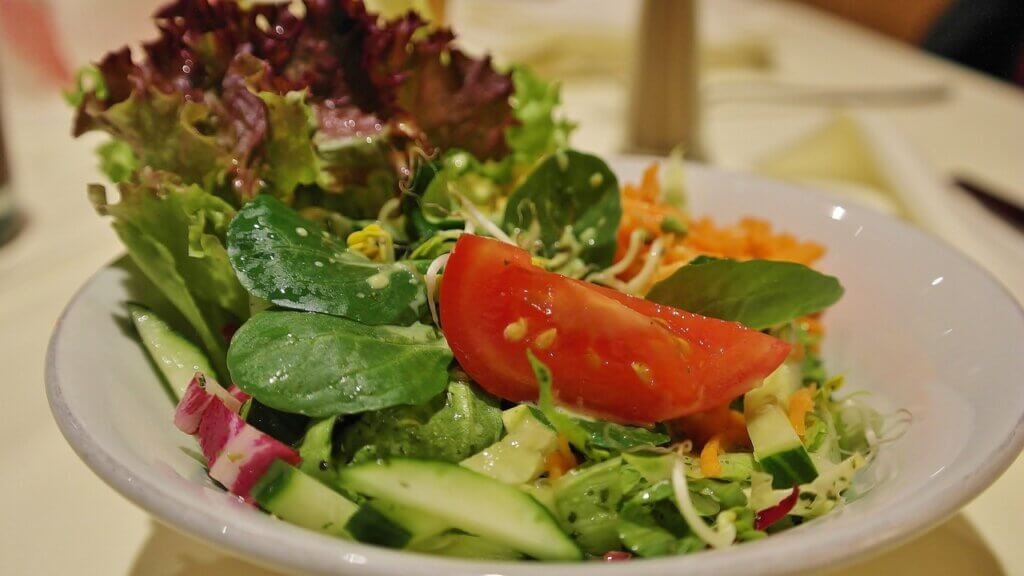
Designing an Edible Landscape
Assessing available space
Before designing your edible landscape, it is crucial to assess the available space. Determine how much area you have for planting and consider any limitations or restrictions, such as shaded areas or obstacles like buildings or fences. Take into account the needs of the plants you wish to grow, including their spacing requirements. By assessing the available space, you can plan and design your edible landscape more effectively.
Creating a plan
Once you have assessed the available space, create a detailed plan for your edible landscape. Decide which plants you want to grow, considering their compatibility and companion planting techniques. Determine the layout of your garden, considering factors such as sun exposure, water availability, and the overall aesthetic appeal. You can use software tools or draw a scale model to visualize the design. A well-thought-out plan will help you make the most of the available space and ensure a harmonious and productive edible landscape.
Incorporating aesthetics
While functionality is essential in edible landscaping, aesthetics should also be considered. Incorporating visually appealing elements, such as colorful flowers, decorative containers, or trellises, can enhance the overall beauty of your edible landscape. Consider the visual harmony and balance of the different plants, as well as their growth habits and seasonal variations. By incorporating aesthetics, you can create a visually appealing and inviting space that blends seamlessly with your surroundings.
Considering access and maintenance
In the design phase, it is important to consider access and maintenance needs. Ensure that there are clear pathways and easy access to all areas of the edible landscape for planting, harvesting, and maintenance purposes. Consider incorporating raised beds or vertical gardening techniques to maximize space and accessibility. Additionally, plan for regular maintenance tasks such as watering, weeding, and pruning. By considering these aspects during the design process, you can create an edible landscape that is practical and manageable.
Growing Techniques for Urban Areas
Container gardening
Container gardening is a popular growing technique in urban areas as it allows you to maximize limited space. By using pots, containers, or raised beds, you can grow a wide variety of edible plants, including vegetables, herbs, and even small fruit trees. Ensure that your containers have adequate drainage and select a growing medium suitable for the plants you choose. Container gardening provides flexibility as you can easily move the plants to optimize sunlight exposure or protect them from extreme weather conditions.
Vertical gardening
Vertical gardening is another effective technique for urban areas, as it allows you to make the most of vertical spaces like walls, fences, or trellises. By training plants to grow upwards, you can save valuable ground space and increase your garden’s productivity. Install trellises or vertical structures and select climbing vegetables like cucumbers, beans, or tomatoes. Vertical gardening not only provides more growing area but also adds a visually appealing element to your edible landscape.
Green roofs
Green roofs are an innovative way to incorporate edible landscaping in urban areas, especially for buildings with flat rooftops. By installing a rooftop garden, you can utilize underutilized spaces for growing food and further improve the sustainability of the building. Consult with a professional to ensure that the structure can support the additional weight and that proper waterproofing measures are in place. Green roofs also provide insulation benefits, reducing heat loss in winter and heat gain in summer, thereby improving energy efficiency.
Hydroponics
Hydroponics is a soilless growing technique that is well-suited for urban areas with limited access to soil or where space is a constraint. This method involves growing plants in nutrient-rich water solutions, providing them with all the necessary elements for healthy growth. Hydroponics enables you to grow a wide range of edible plants in smaller spaces and with higher yields compared to traditional soil-based methods. With precise control over nutrient levels and water content, hydroponics allows for year-round cultivation of fresh produce.
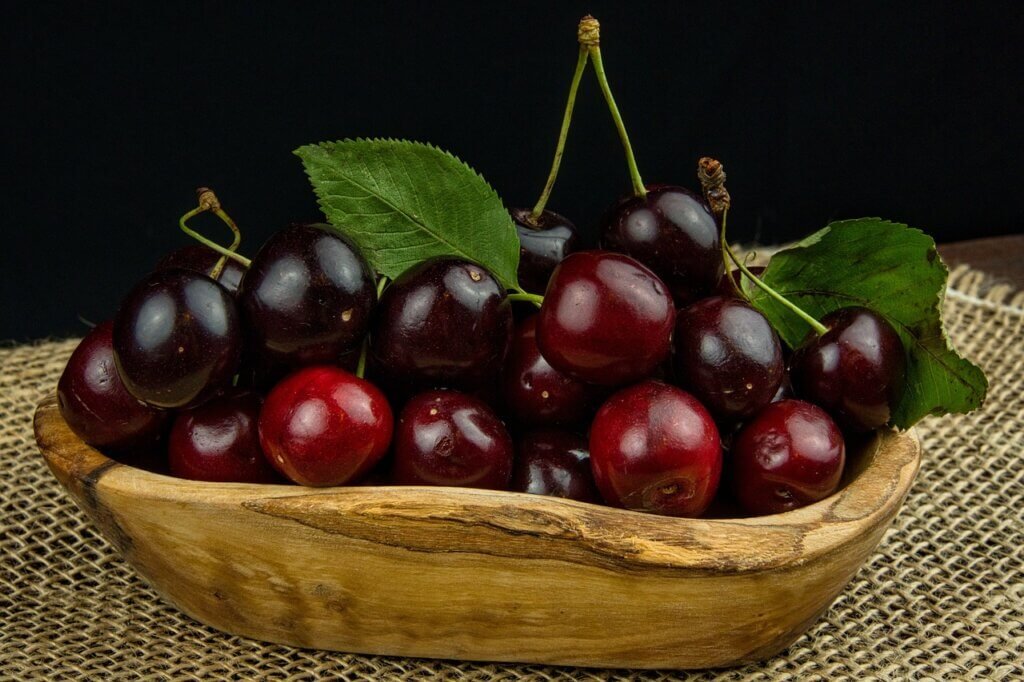
Managing Soil and Nutrients
Soil testing and amendments
To ensure optimal plant growth, it is important to manage soil health in your edible landscape. Start by conducting a soil test to determine the pH level, nutrient content, and overall fertility of your soil. Based on the test results, you can make appropriate amendments such as adding organic matter, adjusting pH levels, or supplementing with specific nutrients. Regularly monitor the soil and make necessary adjustments to ensure your plants have the best possible growing conditions.
Composting
Composting is an effective and sustainable way to improve soil health in your edible landscape. By composting kitchen scraps, yard waste, and other organic materials, you can produce nutrient-rich compost that enhances soil fertility and structure. Add compost to your soil regularly to enrich it with essential nutrients, improve moisture retention, and promote beneficial microbial activity. Composting not only reduces waste going to landfills but also provides a free and natural source of soil amendments for your edible landscape.
Fertilizer choices
In addition to compost and organic matter, fertilizers can be used to provide essential nutrients to your edible plants. Select fertilizers that are appropriate for the specific needs of your plants and incorporate them into your soil management plan. Organic fertilizers, such as compost tea or fish emulsion, are often preferred as they release nutrients slowly and improve overall soil health. However, it is important to follow manufacturer recommendations and avoid overfertilization, which can lead to environmental issues.
Watering and Irrigation Methods
Rainwater harvesting
Rainwater harvesting is an excellent way to conserve water and provide a sustainable water source for your edible landscape. Install rain barrels or cisterns to collect rainwater from rooftops or other surfaces. This water can then be used for watering your plants during dry periods, reducing reliance on municipal water supplies. Rainwater is free from chlorine, which can be harmful to plants, and often contains natural nutrients beneficial for plant growth. Harvesting rainwater helps conserve water resources and promotes sustainable gardening practices.
Drip irrigation
Drip irrigation is an efficient watering method that delivers water directly to the plant roots, minimizing water loss through evaporation or runoff. This method involves the use of a network of tubes or pipes with emitters that slowly release water near the plant base. Drip irrigation ensures that plants receive a consistent and precise amount of water, reducing the risk of overwatering or underwatering. It is particularly beneficial for urban gardens with limited water availability or where water needs to be conserved.
Smart irrigation systems
Smart irrigation systems use advanced technology to optimize water usage in your edible landscape. These systems are equipped with sensors that monitor soil moisture levels, temperature, and other environmental factors. Based on these data, the system automatically adjusts the irrigation schedule and duration to provide the optimal amount of water for your plants. Smart irrigation systems reduce water wastage and ensure that your plants receive just the right amount of water, promoting healthy growth while minimizing water consumption.

Pest and Weed Control
Integrated pest management
Integrated pest management (IPM) is a holistic approach to pest control that minimizes the use of chemical pesticides. IPM involves a combination of preventive measures, monitoring, and targeted interventions to manage pests effectively. Start by implementing cultural practices, such as proper plant spacing and regular plant inspections, to prevent pest infestations. Monitor your plants for signs of pests and use natural pest control methods, such as biological control agents or physical barriers, before resorting to chemical treatments. By implementing an IPM strategy, you can minimize the negative impacts of pests on your edible landscape while promoting a healthier ecosystem.
Natural pest repellents
In addition to IPM techniques, there are various natural pest repellents you can use in your edible landscape. Many pests can be deterred by the strong scent of certain plants. For example, planting marigolds can repel certain insects, while growing garlic and chives can deter pests like aphids. Consider incorporating companion plants that have natural pest-repellent properties or use homemade pest sprays made from ingredients such as neem oil or soap. Natural pest repellents offer a safer and environmentally friendly alternative to chemical pesticides.
Mulching to suppress weeds
Mulching is an effective weed control method that also helps conserve moisture in the soil. By applying a layer of organic mulch, such as wood chips or straw, around your plants, you can suppress weed growth and reduce the need for frequent weeding. Mulch acts as a physical barrier, preventing weeds from germinating and competing with your edible plants for nutrients and water. Furthermore, mulch helps regulate soil temperature and moisture levels, creating a favorable environment for plant growth. Regularly replenish the mulch layer to maintain weed suppression and soil moisture retention.
Harvesting and Utilizing Edible Plants
Proper timing for harvest
To get the best flavor and nutritional value from your edible plants, it is important to harvest them at the right time. Different plants have specific indicators for harvest readiness, such as color, size, or texture. Research the optimal harvesting time for each crop you are growing and regularly monitor your plants for signs of ripeness. Avoid harvesting produce too early or too late, as this can affect taste and quality. With proper timing, you can enjoy the freshest and most flavorful produce from your edible landscape.
Different ways to utilize harvested produce
Once you have harvested your crops, there are numerous ways to utilize and enjoy the abundance of fresh produce. Incorporate your harvest into your daily meals, experimenting with new recipes and flavors. Preserve excess produce through methods like canning, freezing, or drying, allowing you to enjoy homegrown food throughout the year. Consider sharing your harvest with friends, family, or even local food banks, spreading the benefits of your edible landscape and fostering community connections.
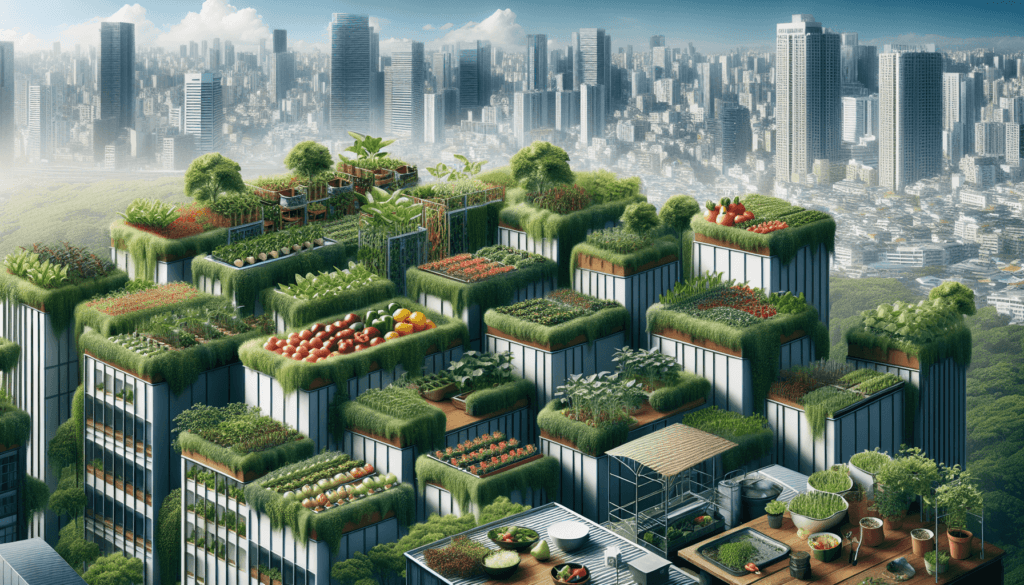
Engaging the Community
Organizing community gardens
Engaging the community in edible landscaping initiatives can be done through the establishment of community gardens. These gardens provide a space for individuals and families to come together, learn, and grow their own food. Organize community garden plots, where members can rent or share small sections to grow their favorite crops. This promotes community bonding, knowledge exchange, and environmental awareness. Community gardens also offer opportunities for cooperative initiatives, such as shared tools, composting, or educational programs.
Educational programs and workshops
Educational programs and workshops play a vital role in promoting edible landscaping in urban areas. Organize educational sessions that cover topics like sustainable gardening techniques, organic pest control methods, or making the most of limited space. Offer gardening workshops for both adults and children to learn hands-on skills and gain knowledge about growing their own food. By sharing knowledge and providing learning opportunities, you can empower individuals and inspire them to incorporate edible landscaping into their lives.
Sharing surplus produce
One of the community benefits of edible landscaping is the abundance of produce that can be shared with others. Establish a system for sharing surplus produce among community members, such as a food exchange or donation program. Encourage individuals to share their excess harvest with neighbors, friends, or local food banks to address food insecurity and promote community resilience. Sharing surplus produce fosters a sense of generosity, strengthens community ties, and ensures that no food goes to waste.
Overcoming Challenges
Limited space and sunlight
One of the main challenges in urban areas is the limited space and access to sunlight for growing edible plants. However, with creative techniques like container gardening, vertical gardening, and using underutilized spaces like rooftops, it is possible to maximize space and sunlight availability. Choose plants that tolerate shade or grow well in compact environments. Utilize reflective surfaces or install supplemental lighting to increase the amount of light reaching your plants. By thinking outside the box and optimizing available resources, you can overcome the challenges of limited space and sunlight in urban areas.
Potential contamination risks
Urban areas may face contamination risks due to pollution, contaminated soil, or use of harmful chemicals in the past. It is crucial to assess and address potential contamination risks before establishing an edible landscape. Test the soil for pollutants or heavy metals and remediate if necessary. Consider using raised beds and containers with fresh soil to minimize contact with contaminated soil. Opt for organic gardening practices to avoid the use of chemicals that may further contribute to contamination. By taking appropriate precautions, you can ensure a safe and healthy edible landscape.
Securing support and resources
Establishing and maintaining an edible landscape in urban areas may require support and resources from the community or local organizations. Seek assistance from local gardening clubs, neighborhood associations, or municipal authorities who may provide funding, expertise, or guidance. Collaborate with schools, businesses, or nonprofits to access additional resources such as land, tools, or materials. By engaging the support of the community and securing necessary resources, you can overcome challenges and successfully implement and sustain your edible landscaping project.
In conclusion, incorporating edible landscaping in urban areas offers a wide range of benefits, including environmental sustainability, improved health, and community engagement. By understanding local climate and conditions, selecting suitable plants, and designing a thoughtful landscape, you can create an aesthetically pleasing and productive edible garden. Utilizing various growing techniques, managing soil and nutrients, implementing efficient watering methods, and employing pest and weed control strategies are essential for successful edible landscaping. Harvesting and utilizing the produce, engaging the community, and overcoming challenges like limited space, contamination risks, and resource scarcity are vital for long-term success. Embrace the benefits and possibilities of edible landscaping and transform your urban environment into a thriving, sustainable, and vibrant space.
